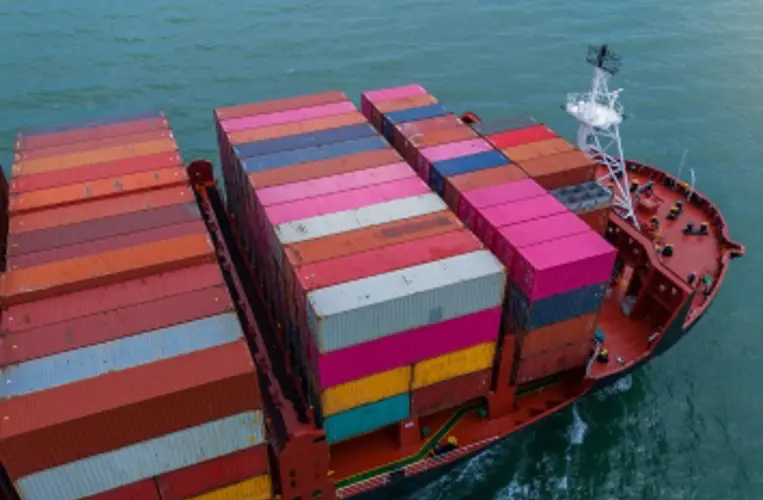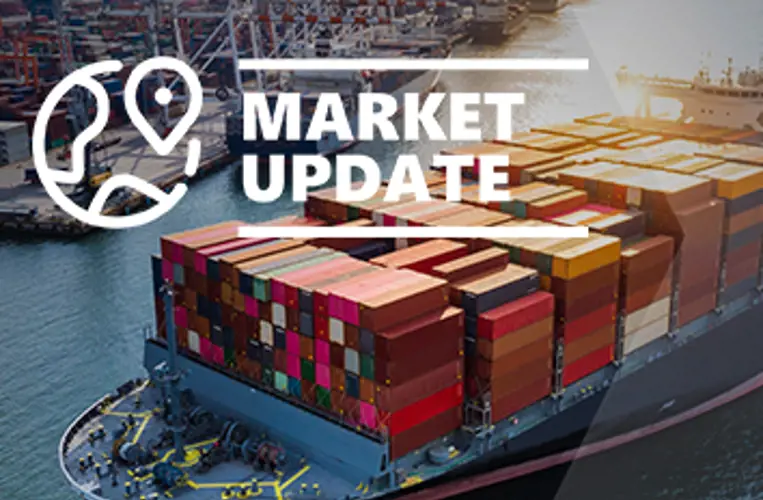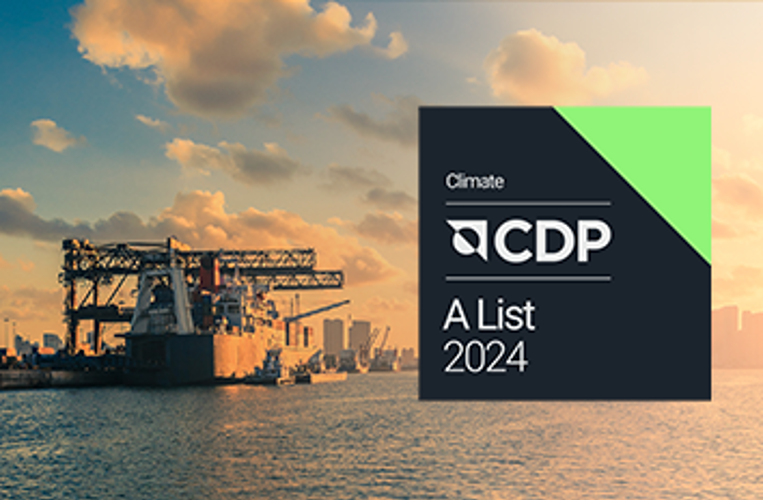On behalf of Scan Global Logistics

Global COO & CCO
Advisory
12 Jan, 2024

During the night, the US and UK have carried out multiple strikes against the Iran-backed Houthi rebels in Yemen. Joe Biden said he ordered the strikes as a: “direct response to unprecedented Houthi attacks against international maritime vessels in the Red Sea”, and a statement released by the White House stated: “Today, at my direction, U.S. military forces—together with the United Kingdom and with support from Australia, Bahrain, Canada, and the Netherlands—successfully conducted strikes against a number of targets in Yemen used by Houthi rebels to endanger freedom of navigation in one of the world’s most vital waterways”.
It was further added that: “we will not hesitate to direct further measures to protect our people and the free flow of international commerce as necessary”.
The strikes were predominantly carried out by fighter jets using Tomahawk missiles. CNN reports that more than a dozen Houthi targets were fired upon from air, surface and submarine platforms chosen for their ability to degrade the Houthi´s continued attacks.
A senior military US spokesperson stressed that; “We were absolutely not targeting civilian population centers. We were going after very specific capabilities, in very specific locations, with precision munitions”. [1]

Picture Source:Reuters
UN Security Council calls for Houthi rebels to immediately cease attacks
The timing of the attack by the US and UK is logical from the perspective that the UN Security Council on Wednesday demanded Yemen’s Houthi rebels to immediately end attacks on vessels in the Red Sea. The demand also called for the Houthis to release the Galaxy Leader with its 25-person crew being held hostage. The Galaxy Leader is a Japanese operated vehicle carrier with ties to an Israeli businessman.
A total of 11 members of the UN Security Council voted for the measure, according to Reuters, while Russia, China, Mozambique and Algeria abstained from voting.
The key provision of the resolution, sponsored by the U.S. and Japan, noted the right of UN member states to defend their vessels from attacks, including those that “undermine navigational rights and freedom”. Implicitly, the resolution is seen as a support for the US-led coalition Operation Prosperity while not directly endorsing same, leaving for respective member countries to assess their own participation in the coalition. [2] Additionally, it is likely that the strike against Houthi rebels was also triggered by what was the largest attack so far on commercial vessels earlier this week. US Naval forces shot down 18 drones and 3 missiles following a large-scale attack by Houthi rebels.
The US Central Command confirmed the attack by the Houthis, while also informing that a double-digit number of commercial vessels were in the area at the time of the attack.
Russia requests UN Security Council meeting after US and UK attacks in Yemen.
Russia quickly reacted to the latest escalation of the ensuing conflict, calling for an urgent meeting in the UN Security Council on Friday to discuss the matter.
Maria Zakharova, Russian Foreign Ministry spokeswoman, commented: “The U.S. air strikes on Yemen are another example of the Anglo-Saxons' perversion of UN Security Council resolutions” and continued, “the strikes showed a "complete disregard for international law" and were "escalating the situation in the region”.
A similar reaction has come from Iran, with Iran´s Foreign Ministry spokesperson, Nasser Kannani, stating: "These attacks are a clear violation of Yemen's sovereignty and territorial integrity and a breach of international laws. These attacks will only contribute to insecurity and instability in the region.”
In another outcry, the Iran-backed Hezbollah group said in a statement: "The American aggression confirms once again that the U.S. is a full partner in the tragedies and massacres committed by the Zionist enemy in Gaza and the region”.
In a somewhat more cautious reaction, Saudi Arabia called for “restraint and urged to avoid escalation”. [3]
The attack, however, in the statement released by the White House, received backing from a number of allied countries, including Denmark, Germany, The Netherlands, Canada and Australia.
The escalation waiting game is on
This new development obviously fuels speculation as to whether this brings an ending to the crisis in the Red Sea closer, or if this, in fact, will result in a prolonged conflict in the area.
Not surprisingly, Houthi Rebels immediately vowed to continue the fight, and Houthi leader Abdul Malek Al-Houthi confirmed, “any attack will not go unanswered”, cryptically warning that the response will be “much more than attacking US ships in the sea”.
As we speak, there has been no sign of retaliatory action by the Houthis, while a US Administration Official signaled that there could be more action to come; “this may well not be the last word on the topic,” the administration official said. “And when we have more to say and more to do, you will hear from us.” [4]
Considering this is a very new development, it would be premature to speculate further on the actual impact and whether this is good news for global shipping or, in fact, signals a prolonged crisis and thus continued routing around the tip of Africa.
80 % of container vessels bypass Suez Canal
While smaller vessels still traverse the canal, all major container carriers continue to bypass the Red Sea and, consequently also, the Suez Canal.
Shippingwatch.com reports that according to Linerlytica, a total of 354 container vessels have since 15 December 2023 been rerouted, equaling a drop of container vessels utilising the Suez Canal by approximately 90 % vs. same period last year. The same number of vessels equals approximately 80 % of the total container fleet sailing between the Atlantic, Mediterranean and Indian Ocean.[5]
Maersk and Hapag Lloyd deny allegations of direct negotiations with Houthi rebels
Both Maersk and Hapag Lloyd have after speculation prompted by an article in shippingwatch.com, issued a clear denial of any form of direct negotiations with Houthi rebels. The speculation remains; however, it is believed that it relates to smaller niche carriers and not the larger global container carriers.[6]
Shippingwatch.com, though, maintains in an article published on 11 January that “it has confirmed the identity of a not insignificant shipping company in the Middle East that has made a deal to sail unhindered through the Red Sea” and continues that it cannot disclose the name of the company due to reasons of source protection.[7]
As previously reported, this agreement is contingent on the shipping company not sailing to Israel, and not transporting Israeli cargo. Other carriers, including Chinese-based Cosco, have already taken a similar step, informing it would abstain from sailing to Israeli ports.
Ocean freight rates continue to increase including major hikes on US East and West Coast
In fresh SCFI numbers published this morning, the SCFI index continued its upward trajectory. Rate level to main port Europe increased by USD 232/TEU vs last week, bringing a 40´ rate up to USD 6.206, an increase of more than USD 500 week-on-week. Rates from Asia into the Mediterranean increased even further, with a 40´ rate now passing the USD 8.000 mark, up by more than USD 750 compared to last week.
Increases on US trade-lanes were on the other hand dramatic by nature, with an increase of a whopping USD 1.882 per 40´ for the East-Coast and USD 1.199 per 40' on the West Coast. This brings the total rate for the East Coast to USD 5.813 and USD 3.974 for the West Coast per 40´.
So again, the notion that the current Red Sea Crisis is isolated to Asia and Europe is once again proven wrong.

As communicated in our previous advisory earlier this week, it is imperative to differentiate between short-term spot rates and long-term validity rates. While actual short-term rates have skyrocketed during recent weeks, long-term rates have more so been subject specific surcharges such as War Risk, Peak Season and Operational Recovery Surcharges with these for now applicable until further notice.
This also prompts us to yet again stress that any benchmark or discussion on rates should focus on the all-in rate, taking into consideration all applicable surcharges. It also cements the fact that we, in essence, see two fundamentally different market-level rates with a significant rate differential.
Capacity crunch emerging as the Lunar New Year race is heating up
Xeneta, the leading rate index and benchmark platform, issued a warning to shippers in a comment to theloadstar.com: “shippers need to get their act together quickly” to secure capacity and continued “the Red Sea crisis will get worse, before it gets better”.
Similarly, Alan Murphy from Sea-Intelligence comments; “on Asia-North Europe, due to a combination of some services being held back in departure from Asia awaiting re-routing, and some services clearly arriving late into Asia, there is a rapid shortfall in the middle weeks of January, with a steep capacity drop expected for the week of 22 January”.[8]
Container availability challenges loom around the corner
Vessel capacity aside, there is consensus in the industry that lack of available container equipment could be a far more serious challenge in the weeks and months to come. While, the complex eco-system of empty container repositioning is often not getting much attention, then it is a fundamental and pivotal part of the container shipping industry.
Simply put, there is a much bigger need for container equipment in Asia vs. Europe, also known as the "Asia-Europe trade imbalance”. Typically, many vessels going from Europe to Asia are carrying empty equipment to be used in Asia and with vessel schedules being out of sync, there is a direct correlation with empty equipment not being repositioned as usual.
The first signs of this have been seen in the sub-continent trade, with available empty containers being scarce. As a result, this has also propelled rates on an upward trajectory.
Philip Damas, Managing Director, Head of Supply Chain Advisors at Drewry, commented on this topic in article on gCaptain; “it should be noted, that container equipment is likely to remain displaced for several weeks which will affect service schedules and create inflationary headwinds”.[9]
As we speak, our assessment is that this will be a concrete challenge on most major trades. However, it is premature to speculate on the extent of this, with much hinging on whether this challenge surfaces pre- or post-Lunar New Year.
Projected North Europe port congestion in early February
With an armada of container vessels having been re-routed in recent weeks, there are growing concerns that port congestion will potentially add to current woes. Amidst schedule changes, it is expected that carriers may opt to rationalize port operations in North Europe, calling fewer ports in an attempt to regain some of the lost time.
Despite this speculation, it is not expected we will see a situation mirroring that of the pandemic days where ports were chuck and block full as customers across the continent were unable to unload containers due to lockdowns. Accordingly, the likely scenario would be smaller delays by nature; however, given these projected delays come on top of already extended transit times, the impact will be noteworthy.
Ports in Germany impacted by blockades and strikes
In Germany, the situation will potentially be worsened by the outlook of continued strikes and blockades by protesting farmers amidst a dispute over agricultural subsidies in Germany.
On Thursday 11 january, up to 600 protesting farmers blocked the Port of Hamburg using their tractors arriving in convoys from 3 different directions.

Picture Source:ShippingWatch
This follows a similar action in Bremerhaven on Wednesday 10 January with around 100 tractors blocking the terminal.[10]
With no immediate solution expected there are growing concerns farmers will increasingly seek to disrupt both ports and highways prompting amongst other Maersk to caution their customers that further delays are to be expected.
Airfreight capacity remains available
While an uptick in volumes on the airfreight side has been visible, a tsunami-like volume surge has not been the case. It is though expected that this will gradually increase, considering that the challenges in the Red Sea by now are considered longer lasting.
With this seemingly projected to be the latter, the coming weeks will surely spell busier than usual times for airfreight during the month of January.
Accordingly, we expect some form of upward rate level pressure up until the Lunar New Year period, however also here, it is not expected that it will surge overnight but rather increase progressively.
Sea-Air solutions remain popular, providing a “hybrid” alternative, and we are on standby to support for urgent shipments.
OCEAN FREIGHT



AIRFREIGHT



RAIL FREIGHT


As always, our teams are working around the clock to keep you duly informed both in terms of potential delays and, not least, in terms of alternative solutions.
All the above information is given to the best of our knowledge and is subject to change.
[1] https://edition.cnn.com/2024/01/11/politics/us-strikes-houthis-yemen/index.html
[2] https://www.reuters.com/world/middle-east/un-security-council-demands-houthis-stop-red-sea-attacks-2024-01-10/
[3] https://www.reuters.com/world/middle-east/reactions-us-british-strikes-against-houthis-yemen-2024-01-12/
[4] https://edition.cnn.com/2024/01/11/politics/us-strikes-houthis-yemen/index.html#:~:text=In%20a%20speech%20Thursday%2C%20Houthi,US%20ships%20in%20the%20sea
[5] https://shippingwatch.com/carriers/article16749073.ece
[6] https://theloadstar.com/hapag-lloyd-and-maersk-deny-reports-of-negotiations-with-houthis/
[7] https://shippingwatch.com/carriers/article16749073.ece
[8] https://theloadstar.com/shippers-must-pay-a-heavy-price-for-capacity-as-ships-are-filling-up/
[9] https://gcaptain.com/drewry-one-third-container-shipping-capacity-impacted-red-sea/

On behalf of Scan Global Logistics

Global COO & CCO









